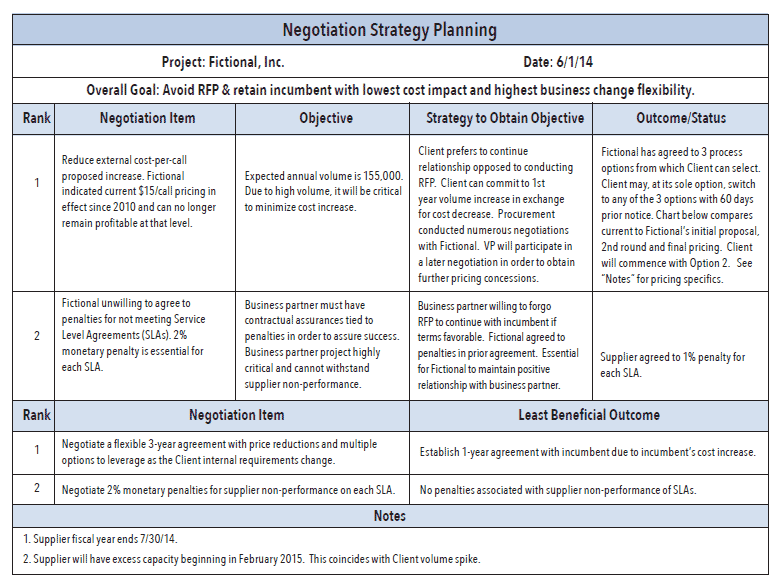From SCDigest's On-Target e-Magazine
- Oct. 13, 2015 -
Supply Chain News: Using a Negotiations Spreadsheet Tool can Help Procurement Managers Work More Effectively with Business Managers
Alexandra Moschell of Hallmark Discusses Her Approach in Inside Supply Management
SDigest Editorial Staff
Can a simple spreadsheet tool help procurement manager communicate with their internal business partners and drive more clarity relative to goals for negotiations with suppliers?
SCDigest Says: |
 |
Moschell says it is often beneficial to conduct a preparation meeting with the business partner and SME team prior to each negotiation to build confidence in the process, and to confirm roles and responsibilities.
Accenture |
|
What Do You Say?
|
|
|
|
Alexandra Moschell, senior strategic buyer for Hallmark Cards, thinks so, so much that she wrote about the approach in a recent edition of the Inside Supply Management magazine from the Institute for Supply Management.
Moschell says the development of a negotiations strategy consists of four key steps:
Communicate: Start with a kick-off meeting with the business partner(s) in which information is shared relative to the process, roles, and a basic time table. The conversation should also document what will constitute successin a particular negotiation.
Moschell also belies that when this information is openly discussed, business managers "may not be compelled to conduct the negotiations independently when they know that procurement is going to effectively represent their goals and interests."
Prepare and Analyze: In this phase, procurement managers can start populating the spreadsheet tool (see example below).
That includes adding key negotiating points, background information in the notes section, and documenting all the issues and their importance to the business partner in order of priority.
Also documented is the partner's likely objective for each negotiating point.
"With the knowledge of what the business partner is trying to achieve, you can develop a targeted strategy to obtain each objective," Moschell writes.
And don't fail to ask what information business partners know about a supplier. This shows respect, and they often do know quite a bit about a given supplier's business that will help in developing the strategy.
At this point, the procurement manager further completes the spreadsheet tool: Negotiation, Objective, Strategy to Obtain Objective, and Outcome/Status.
Once these fields are populated, each negotiation item should be ranked in order of importance.
Hallmark's Negotiations Summary Tool

Source: Alexandra Moschell, in Inside Supply Management
"Document all the requirements to achieve a beneficial outcome, which will make the strategy more intuitive and easy to follow," Moschell adds. "It also will allow you to effectively plan rebuttals and counters to the supplier's objections, now knowing what is important to the supplier, where to push and where to concede."
After the populated template is complete, the next step is to meet with the business partner(s) to share the documented process. This is the time to discuss whether the plan as documented is consistent with the goals agreed on at the kick-off meeting.
(Sourcing and Procurement Article Continues Below)
|